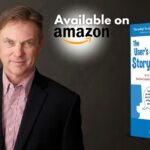Diamonds have long stood as a symbol of enduring beauty, their allure cemented in cultural traditions around the world. Yet, the process of their creation has historically been shrouded in the slow passage of time, hidden deep within the Earth.
Today, you have the ability to choose a gem that merges the mystique of diamonds with modern innovation: lab-grown diamonds. These stones are not mere imitations, but real diamonds with the same chemical, physical, and visual properties as those mined from the earth.
Understanding how lab-grown diamonds are made can deepen your appreciation for these marvels of human ingenuity.
Through advanced technological processes, scientists replicate the natural conditions under which diamonds develop.
There are two primary methods used in their creation: the High Pressure High Temperature (HPHT) technique and the Chemical Vapor Deposition (CVD) method. Both result in the growth of a diamond, but they do so in uniquely different ways that are fascinating to discover.
Selecting a lab-grown diamond is not just a testament to your values but also a nod to the impressive strides science has made in gemology.
As your interest in these extraordinary stones grows, dive into the science and craftsmanship that allows a lab-grown diamond to transition from an idea to a sparkling reality on your finger.
The Origins of Lab-Grown Diamonds
Lab-grown diamonds mark an exciting shift in gemstone creation, mimicking nature’s handiwork without the extensive time scale.
The Concept and Early Experiments
The journey into lab-grown diamonds started with an idea: to replicate the natural diamond formation, but above the earth’s surface.
General Electric (GE) was first to transform theory into reality in the 1950s, successfully producing diamonds in a laboratory setting. This initial method employed what is known as high-pressure, high-temperature (HPHT) to simulate the natural conditions that create diamonds underground.
Technological Advancements
As years passed, the pursuit of perfection led to the development of a second process: chemical vapor deposition (CVD).
This technique, reliant on gas and a substrate to grow diamond crystals, represented a significant leap forward. Your modern lab-grown diamonds are often the product of these advanced techniques, refined across decades to achieve the sparkle and structure akin to their mined counterparts.
Manufacturing Process
The process of creating lab-grown diamonds mimics the natural development of diamonds but does so in a controlled laboratory environment, involving meticulous preparation and advanced technological methods.
Preparing the Carbon Source
To initiate the creation of a lab-grown diamond, a carbon source is essential. This source provides the necessary element, carbon, from which the diamond will form.
Typically, a small diamond seed is placed in an environment where it can be exposed to pure carbon in one of several forms, such as graphite.
Choosing the Method: HPHT vs. CVD
There are two prominent methods for growing diamonds in a laboratory: High Pressure High Temperature (HPHT) and Chemical Vapor Deposition (CVD).
HPHT replicates the high-pressure, high-temperature conditions found deep within the Earth where natural diamonds form. By contrast, CVD employs lower pressures and temperatures, as a carbon-rich gas mixture deposits carbon atom by atom onto a substrate.
The Growth Chamber Environment
The environment within the growth chamber is critically maintained.
For HPHT, a specialized press exerts extreme pressure and temperature on the carbon source around the diamond seed. In CVD, the chamber is filled with a carbon-containing gas, which is then ionized into plasma, allowing carbon atoms to deposit on the diamond seed plate.
The Diamond Growth Phase
During the diamond growth phase, careful control of the chamber’s conditions allows the carbon atoms to build upon the diamond seed’s lattice structure layer by layer.
This phase can last several weeks to several months, depending on the desired size and properties of the diamond being grown. The meticulous nature of this phase is reflected in the diamonds’ quality and attributes.
Post-Growth Treatments and Quality Assessments
After lab-grown diamonds are created, they undergo post-growth treatments and quality assessments to ensure they meet the highest standards. These steps are crucial for enhancing the gems and verifying their properties.
Cutting and Polishing
Your lab-grown diamond’s journey continues with cutting and polishing, which are essential in bringing out the stone’s brilliance.
Precision equipment shapes the diamond, and expert artisans work to achieve the perfect cut, reflecting light to display the stone’s fiery sparkle. Polished diamonds are then assessed for their finish and symmetry, each facet checked for perfection.
Grading and Certification
Once the diamond is cut and polished, it proceeds to grading and certification.
This is a rigorous process where the gem’s qualities, such as carat weight, clarity, color, and cut, are evaluated.
Reputable organizations like the International Gemological Institute have pioneered the certification of lab-grown diamonds, adding details about the manufacturing process to their reports from January 2021.
Ethical Considerations and Transparency
Ethical considerations and transparency are paramount in the production of lab-grown diamonds.
Consumers like you are assured of the ethical sourcing and sustainable practices that go into their creation. Unveiling the process of post-growth treatments not only satisfies curiosity but also strengthens consumer trust in the ethical credentials of lab-grown diamonds.
Market Impact and Future Trends
The lab-grown diamond industry has been transforming the gem market with notable growth and is poised to continue reshaping consumer preferences and production technologies.
Consumer Reception
Your interest in lab-grown diamonds reflects a significant shift in the market.
A substantial 38% increase in sales from 2021 to 2022 illustrates growing consumer acceptance. These diamonds have become popular due to their affordability and ethical appeal, with sales climbing from under $1 billion in 2016 to nearly $12 billion in 2022.
Competing with Natural Diamonds
Lab-grown diamonds are not only gaining popularity but are also influencing the pricing of natural diamonds.
They used to be priced at a 20% discount compared to natural diamonds, but now they are being sold at significantly larger discounts, sometimes up to 80% less. This competitiveness is leading to adjustments in the pricing strategies of traditional diamond retailers.
Future Technologies in Diamond Creation
Advanced technologies promise to refine the creation of lab-grown diamonds further. Progress in manufacturing techniques is expected to enhance quality and reduce production costs. This indicates that lab-grown diamonds might become an even more dominant force. The market is projected to reach a substantial figure, with one report forecasting $27.6 billion by 2023.
Published by: Martin De Juan



















